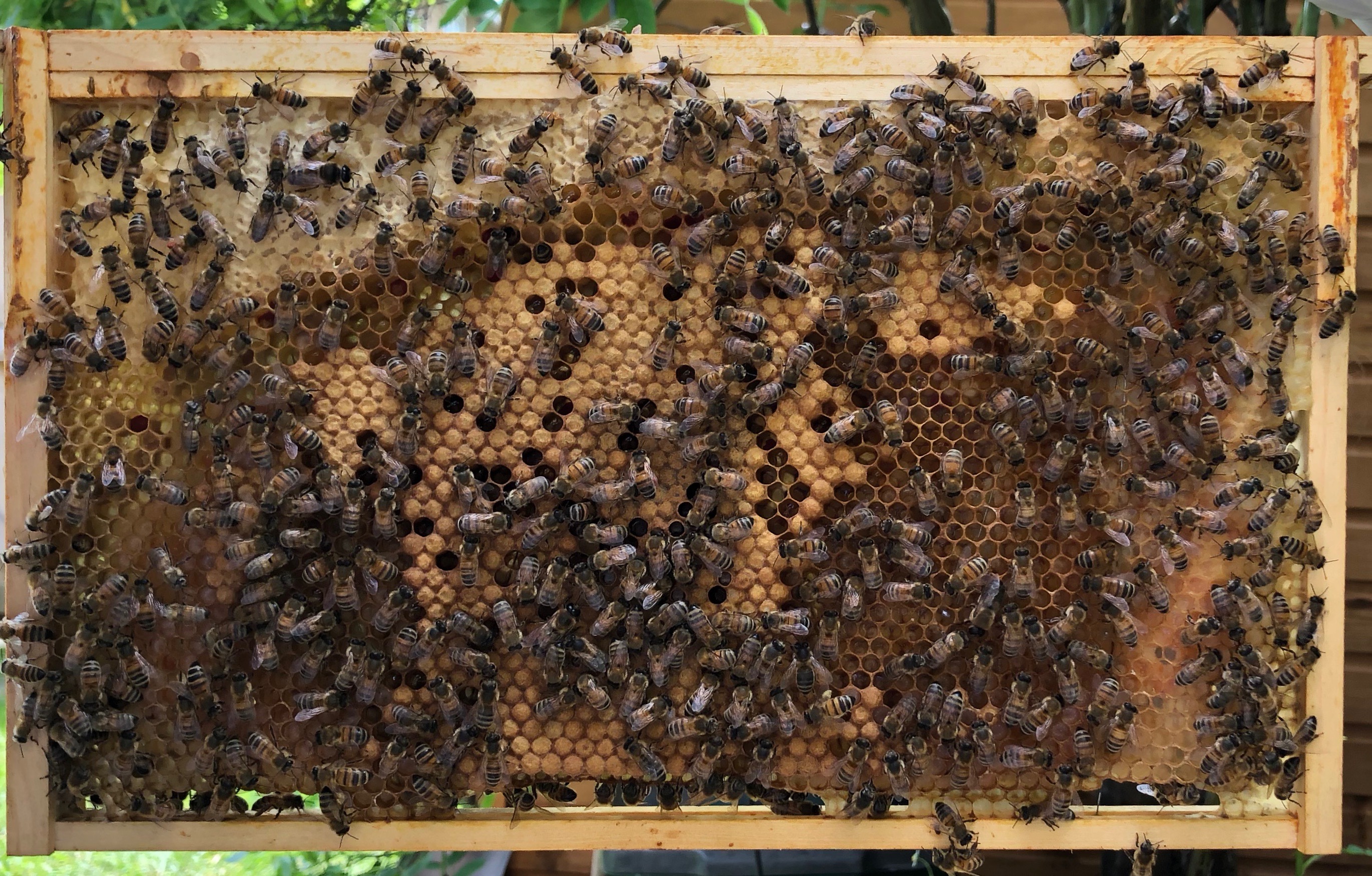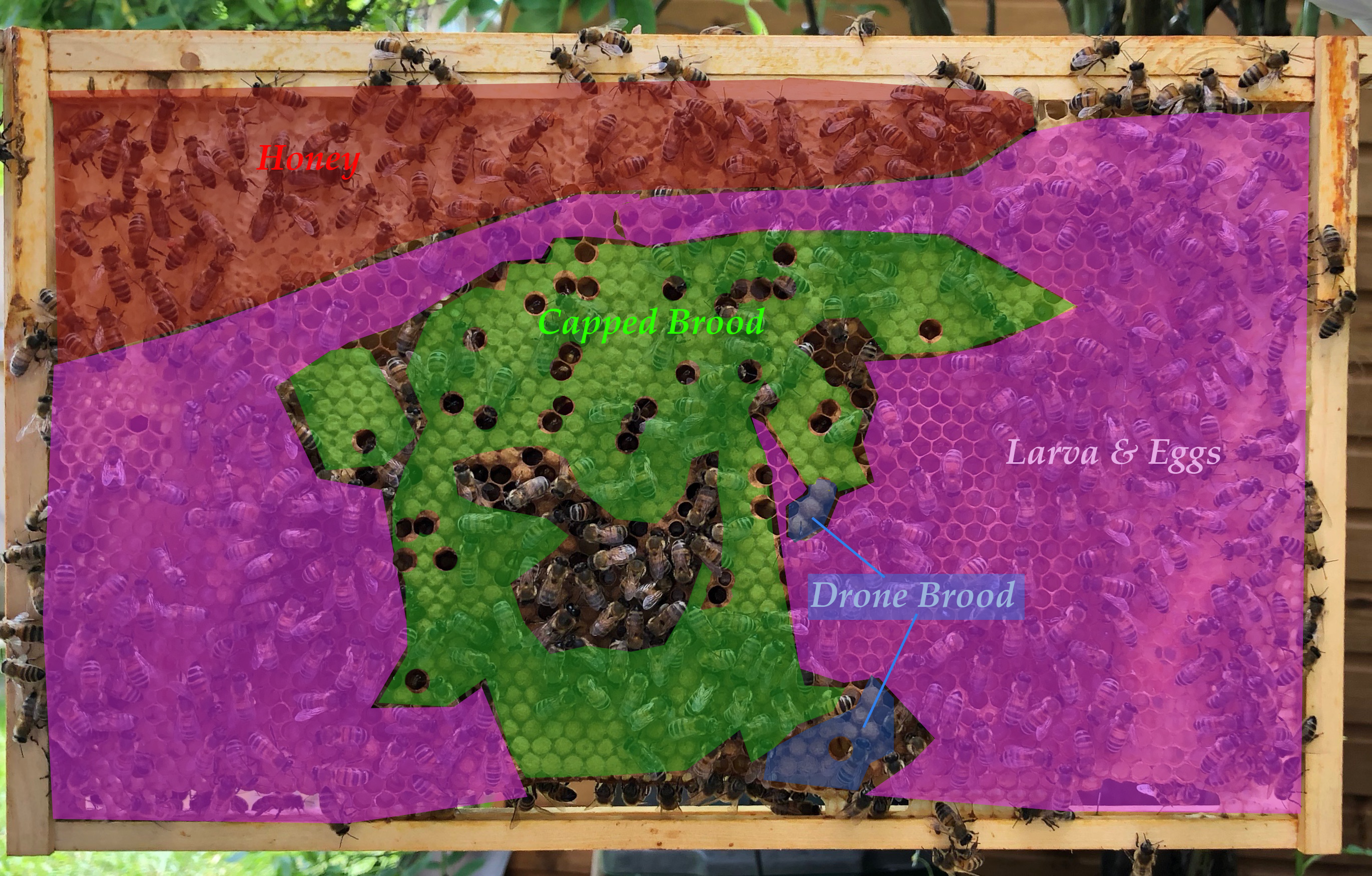Hi, I'm new to bees and just recently finished a beginners course at my local association. Course was interesting but 95% classroom based with probably less than 30 mins practical stuff opening up a hive (it was a cold windy day for the practical session). Like all courses of that type, I suppose, it was great for giving a little bit of foundation knowledge but I suspect the real learning won't start until I'm on my own and doing the practical stuff regularly...making decisions and making my own mistakes (probably).
To that end, I bit the bullet last week, sold a kidney, and bought a national hive (with deep 14 x 12 brood box). I set it up and bought a Nuc of bees a few days later (native bees). The first problem I encountered was with transporting the bees. I'd bought a poly nuc, specifically for the purpose of getting them from the seller (40 minute drive away) to my home. The seller insisted, though, that a much better idea would be for me to bring my brood box, floor, crown board and some straps. His reasoning was that it would be easier just to move the bees once rather than from his nuc..to my nuc...to my hive. That made sense. The only issue I had was that the seller sold me the bees on 6 standard sized frames and my brood box is 14 x 12. I'd read on here and elsewhere that is not necessarily a problem and that the bees would fill the gap with wild comb until I was able to work the standard frames out of the brood box and gradually replace them with 14 x 12s.
The journey home at midnight, with the well strapped brood box, was incident free (thankfully) and once home I was able to place the brood box in position and uncover the entrance for the bees to fly the next morning. Over the next week I was desperate to take a look at what they were doing but I resisted and simply watched them fly in and out laden with pollen, which was reassuring. Yesterday I took the plunge and took a peek. I won't call it an 'inspection' because I'm not entirely sure what I was looking at (yet) but I did see the Queen (she's marked red). I also saw that the bees has drawn out almost an entire 14 x 12 frame and I saw plenty of capped cells but unsure whether they were brood or stores. I'm annoyed with myself for not looking closer and identifying exactly what I was looking at but I guess that will come with time. I also saw that the bees had indeed produced a load of wild comb attached to the bottom of each standard frame, as predicted by everything I had read on here. Oh, and I also saw quite a few drone cells towards the bottom of several frames (even I couldn't fail to identify them!). My head is spinning with loads of questions to ask and a thirst for knowledge but can I start with the drone cells. I've heard conflicting information on whether I should leave them alone or remove the drone cells. Someone told me to remove them as it is good measure against Verroa but the guy who sold me the bees said to leave them as 'it's good to have drones in the colony'. My instinct is to leave them for now but what do you guys think?
(Sorry for the ramble on but excitement of having bees getting the better of me and wife isn't interested in listening to me waffle on about them.)
To that end, I bit the bullet last week, sold a kidney, and bought a national hive (with deep 14 x 12 brood box). I set it up and bought a Nuc of bees a few days later (native bees). The first problem I encountered was with transporting the bees. I'd bought a poly nuc, specifically for the purpose of getting them from the seller (40 minute drive away) to my home. The seller insisted, though, that a much better idea would be for me to bring my brood box, floor, crown board and some straps. His reasoning was that it would be easier just to move the bees once rather than from his nuc..to my nuc...to my hive. That made sense. The only issue I had was that the seller sold me the bees on 6 standard sized frames and my brood box is 14 x 12. I'd read on here and elsewhere that is not necessarily a problem and that the bees would fill the gap with wild comb until I was able to work the standard frames out of the brood box and gradually replace them with 14 x 12s.
The journey home at midnight, with the well strapped brood box, was incident free (thankfully) and once home I was able to place the brood box in position and uncover the entrance for the bees to fly the next morning. Over the next week I was desperate to take a look at what they were doing but I resisted and simply watched them fly in and out laden with pollen, which was reassuring. Yesterday I took the plunge and took a peek. I won't call it an 'inspection' because I'm not entirely sure what I was looking at (yet) but I did see the Queen (she's marked red). I also saw that the bees has drawn out almost an entire 14 x 12 frame and I saw plenty of capped cells but unsure whether they were brood or stores. I'm annoyed with myself for not looking closer and identifying exactly what I was looking at but I guess that will come with time. I also saw that the bees had indeed produced a load of wild comb attached to the bottom of each standard frame, as predicted by everything I had read on here. Oh, and I also saw quite a few drone cells towards the bottom of several frames (even I couldn't fail to identify them!). My head is spinning with loads of questions to ask and a thirst for knowledge but can I start with the drone cells. I've heard conflicting information on whether I should leave them alone or remove the drone cells. Someone told me to remove them as it is good measure against Verroa but the guy who sold me the bees said to leave them as 'it's good to have drones in the colony'. My instinct is to leave them for now but what do you guys think?
(Sorry for the ramble on but excitement of having bees getting the better of me and wife isn't interested in listening to me waffle on about them.)






